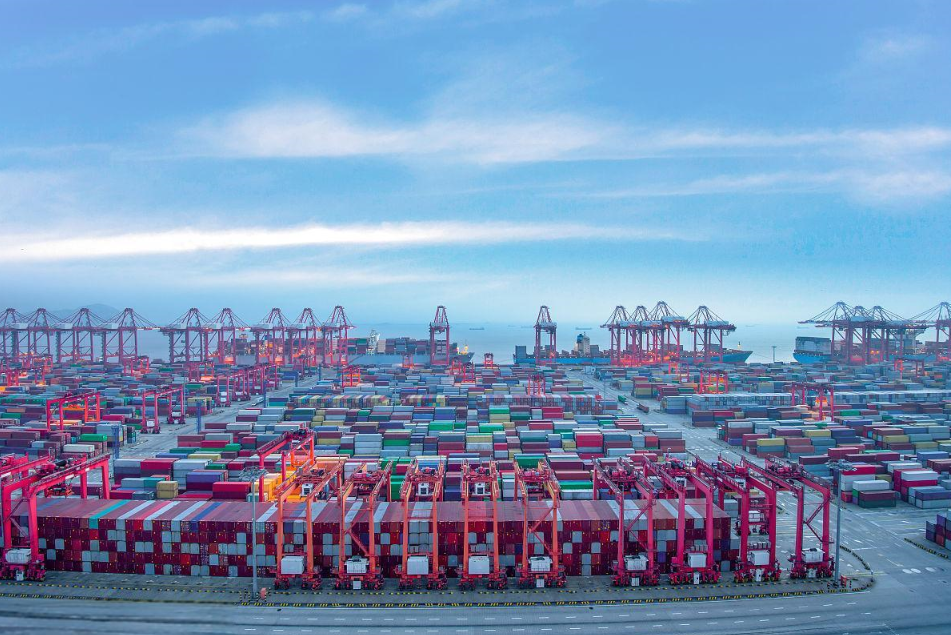International Logistics
International Logistics
International logistics
The international transportation process involves numerous participants, including shipping companies, booking agents, freight agents, customs brokers, etc; I will introduce to you the four main participants in LCL transportation: shipper, consignee, freight forwarder, and shipping company.
Shipping companies are companies that transport your goods by sea, and you may never have face-to-face communication with them, or even see their documents or letters.
sea freight
However, freight forwarders are the logistics suppliers you will be in contact with, and they can arrange transportation from the shipper to the consignee.
The shipper is the shipper of the origin, which can be you or the factory or seller that purchased the product.
The consignee is the recipient of the goods, which may be you or the person you plan to sell the product to.
The five physical steps and two document steps in international transportation:
During the transportation of goods from the shipper to the consignee, there are five physical steps and two document steps that must be carried out for each shipment. Each step has related costs that must be resolved by someone (usually the shipper or consignee). If you want to avoid unexpected costs and unnecessary delays in the supply chain, please ensure that you clearly agree who will pay for each of these 7 steps when booking shipments.
The seven steps of international sea freight include export towing, origin processing, export customs clearance, sea freight, import customs clearance, destination processing, and import towing.
If you have any questions, please refer to the contract between the shipper and the consignee. If it is the sale of goods, the transfer of responsibility for the goods is usually agreed upon in the contract, which will also serve as a source for determining who pays what fees.
Export customs clearance
For each shipment leaving a country, customs procedures must be completed to meet regulatory requirements. Customs clearance is a transaction in which a declaration is made and the required documents are submitted to the authorities, and can only be carried out by a company holding a valid customs license (known as a customs broker).
Export customs clearance can be completed by a freight forwarder with a valid license or by an agent designated by the freight forwarder. Alternatively, it can be executed by a customs broker directly designated by the shipper, who may not necessarily be involved in any other part of the transportation process. The export customs clearance step must be completed before the goods leave the country of origin. If it is not done by the freight forwarder, it usually needs to be completed before the goods enter the freight forwarder's warehouse of origin.
Origin processing
Origin processing covers the physical processing and inspection of all goods from receiving goods at the origin warehouse to loading them onto containers for shipment. Many different parties have taken many steps under the processing of origin, but all of these are coordinated and responsible by freight forwarders or agents designated by freight forwarders. In short, when receiving the goods, they are inspected (tallying), loaded, merged with other goods, loaded into containers and moved to the port, and then loaded onto the ship.
Although it is always the freight forwarder who performs the country of origin processing, regardless of who actually purchases the freight forwarder, payment can be made by the shipper or consignee. For example, if the consignee decides to use freight forwarder A for importing goods and agrees with the shipper that the shipper must pay the origin fee, the shipper will automatically purchase the origin fee from freight forwarder A. If the shipper believes that the price of origin processing is not at the market level, this situation will create some friction because they are forced to use freight forwarder A in this situation

Frozen products, such as frozen meat, seafood, dairy products, etc., are an important component of the food industry. With the development of global trade, frozen goods import business is also becoming increasingly prosperous in China. However, the import customs declaration process for frozen goods is relatively complex, involving multiple links and precautions. This article will provide you with a detailed introduction to the customs declaration process and precautions for frozen goods import, helping you smoothly carry out frozen goods import business.
1、 Customs declaration documents for frozen goods import
1. Import and export operation rights
2. Contract.
3. Invoice and packing list
4. Product information: including product name, quantity, packaging, weight, volume, etc.
5. Certificate of Origin
6. Health certificate
7. Quarantine permit
2、 Frozen goods import customs declaration process
1. Prepare import documents: According to Chinese customs regulations, prepare relevant customs declaration procedures.
2. Handling entry procedures: After the frozen goods arrive at the port of our country, the entry procedures will be processed.
3. Handling customs declaration procedures: Declare the import of frozen goods to the customs and pay relevant taxes and fees.
4. Payment of taxes and fees: According to customs regulations, pay import tariffs and value-added tax on frozen goods.
5. Arrange for pick-up: After the tax payment is completed, arrange for the pick-up and transportation of frozen goods.
3、 Precautions for frozen product import
1. Accept customs inspection: Imported goods need to undergo customs inspection to verify whether the content reported on the customs declaration documents matches the actual arrival.
2. Inspection time and place: Customs inspection of goods should be carried out at the prescribed time and place. If there are special reasons, approval from customs can be obtained in advance.
3. Review of import legality: Customs inspects goods and examines whether the import of goods is legal.
4. Quarantine requirements: Some frozen goods must meet China's quarantine requirements, such as providing a quarantine permit.
4、 Frozen goods import tax
1. Tariff: The import tariff for frozen goods is determined based on specific product codes.
2. Value added tax: The import value-added tax for frozen goods is 13%.
3. Tax payment time: Customs duties and value-added tax shall be paid within 15 days from the date of issuance of the tax payment certificate by the customs, and shall be collected by the customs on behalf of them.
In summary, the frozen goods import customs declaration process and precautions include frozen goods import customs declaration procedures, customs declaration process, precautions, taxes, and preliminary preparation
